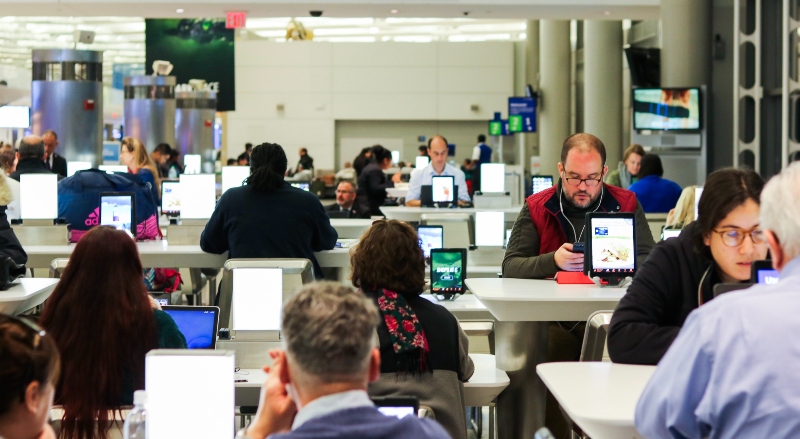
Brexit and Covid-19 are typically considered distinct events. However, these events have one thing in common: they have significantly disrupted the supply chains of UK firms. Since the 1980s, many UK companies have set up centralised manufacturing facilities in low-wage economies where finished goods are assembled cheaply and shipped to higher income markets. Brexit and Covid-19 have delivered a one-two punch to this model; forcing companies to reconsider the short-term benefits and long-term sustainability of low-cost, centralised, production.
A key difference between Brexit and the Covid-19 pandemic is that companies had time to plan for Brexit. While many companies viewed Brexit as a high-probability, high-impact event, the chance of a global pandemic was seen as low-probability, high-impact – if a pandemic was considered at all. Both events had the potential to affect every aspect of the supply chain from access to labour, delays at ports, increased distribution costs and inaccessibility of raw materials and subcomponents.
An examination of the pharmaceutical industry highlights the impact these events have had on global supply chains. When the pro-Brexit vote was announced in June 2016, several multi-national pharmaceutical firms adopted a worst-case scenario planning approach. The key assumption made by these companies was that the UK would leave the EU without a deal and trade would revert to WTO terms. By planning based on worst-case assumptions, these companies did not see Brexit as a strategic supply chain risk, but as an operational issue that could be managed on a day-to-day basis. Any other outcome than a no-deal was viewed as a positive result for these firms. Multi-national companies were in the fortunate position to have the millions of pounds needed to invest in new supply chain assets in Europe and establish new qualified personnel and quality control checks on the continent. With the prompting of the UK government, large pharma firms built six weeks of buffer inventory in the supply chain. Indeed, one reason why the pharmaceutical industry has been able to avoid out-of-stocks on many product lines during the pandemic is because they were holding six weeks of inventory in the event of a no-deal Brexit. In contrast, many small and medium enterprises (SMEs) adopted a ‘wait-and-see’ approach to Brexit because they did not have sufficient financial resources to make supply chain investments while the future EU-UK trading relationship remained ambiguous. After almost four years, SMEs are still uncertain about Britain’s future trading relationship with Europe and unsure how to absorb the potential costs that may come from increased tariff and non-tariff barriers.
Covid-19 has significantly amplified the supply chain uncertainty created by Brexit. The pandemic has led to rolling production stoppages across the globe, starting in China and moving to Europe, the USA and now India and South America. At the outset, governments in India and Europe restricted exports of medicines and medical equipment to ensure there was sufficient volume for their own populations. Delays occurred at border crossings and transport capacity was reduced due to labour shortages and cuts in passenger haulage. The uncertainty of the future EU-UK trading relationship, coupled with the uncertainty of finding a vaccine for Covid-19, means UK companies now need to prioritise resilience and responsiveness over cost and efficiency.
In the first instance, companies need to spread risk geographically by sourcing from a dispersed range of countries and regions. Decisions on where to source products will be largely dictated by the trade deals that Britain strikes with countries after leaving the EU. Dual and multiple sourcing agreements will be required for critical raw materials and components. Companies will need to map the entirety of their supply chains, up to and including raw materials, to create end-to-end visibility and identify bottleneck suppliers. Bottlenecks emerge when only one or two suppliers are available in the market to provide materials. Contingency plans will be required to quickly move production volumes away from bottleneck suppliers to other locations when a future crisis occurs. Companies will also need new key performance indicators that measure supply chain disruptions. As part of an on-time and in-full (OTIF) delivery metric, companies can track the percentage of delays/shortages from suppliers due to manufacturing disruptions, natural disruptions (natural disasters, weather, pandemics) and man-made disruptions (new regulatory regimes, war, border closures). Companies can also track a supplier’s overall time to recover (OTTR), a measure of the time elapsed until a supplier reaches 100% production output following a supply chain disruption.
Another important factor in a post-Brexit, and hopefully post-pandemic, world will be a transition from a centralised to a decentralised manufacturing model. Automotive and apparel companies have already adopted regionalised manufacturing models where production facilities are located in ‘near-shored’ countries (Mexico, Poland, Bangladesh) and products are shipped to larger markets such as China, Germany and the USA. Covid-19 and geopolitical disruptions such as the US-China trade war and Brexit will accelerate this trend.
Following on from the regionalisation trend will be the increased distribution of manufacturing, with products made locally – closer to customers. Establishing parallel supply chains will accelerate the localisation of production. Drawing on our pharmaceutical example, a parallel supply chain would mean having 20-30% of pharmaceutical manufacturing located in the UK, including active pharmaceutical ingredients (APIs), excipients and packaging. The remaining 70-80% would remain overseas using the centralised, low-cost model. When a crisis such as a geopolitical dispute or pandemic hit, production volumes would be transitioned to the UK. If a company expected it to take 3 to 4 months to ramp up UK production, then 3 to 4 months of finished goods inventory would be held in the UK. The parallel supply chain approach is particularly relevant for companies that provide life-saving products (drugs, PPE, ventilators). Pharma companies could begin by identifying critical drugs that treat the symptoms of coronaviruses, and locate a proportion of manufacturing capacity in the UK. The parallel supply chain model is also applicable to industries such as aerospace and automotive, which have long and complex supply chains. Parallel supply chains will require advanced manufacturing technologies such as additive and continuous manufacturing to counteract the high labour costs associated with UK based manufacturing, Localised supply chains have the added benefit of reducing inventory-carrying costs by shortening supply chains and improving responsiveness to demand.
While multinational firms adopted a worst-case scenario planning approach to Brexit, the same approach has yet to be seen with Covid-19. If multinational companies believe that a pandemic is likely to happen again, or that a second/third wave of Covid-19 will shut down global production, then a logical conclusion would be to establish a percentage of manufacturing in the UK. Indeed, the combined uncertainty of Brexit and Covid-19 mean that companies can no longer ‘wait-and-see’. Today’s uncertain world necessitates new supply chain models that prioritise resilience and responsiveness over low-cost, centralised production.
♣♣♣
Notes:
- This blog post expresses the views of its author(s), not the position of LSE Business Review or the London School of Economics.
- Featured image by Science in HD on Unsplash
- When you leave a comment, you’re agreeing to our Comment Policy
 Sam Roscoe is a senior lecturer in operations management in the University of Sussex’s department of management. He is also an associate fellow of the UK Trade Policy Observatory (UKTPO) at the University of Sussex Business School.
Sam Roscoe is a senior lecturer in operations management in the University of Sussex’s department of management. He is also an associate fellow of the UK Trade Policy Observatory (UKTPO) at the University of Sussex Business School.





